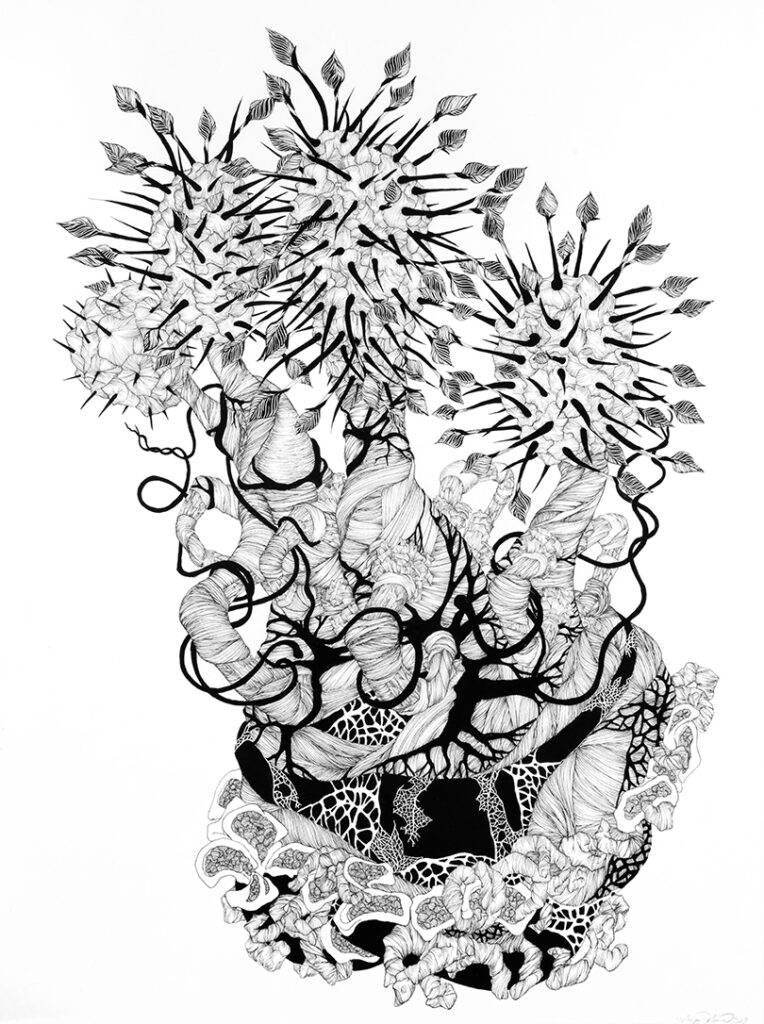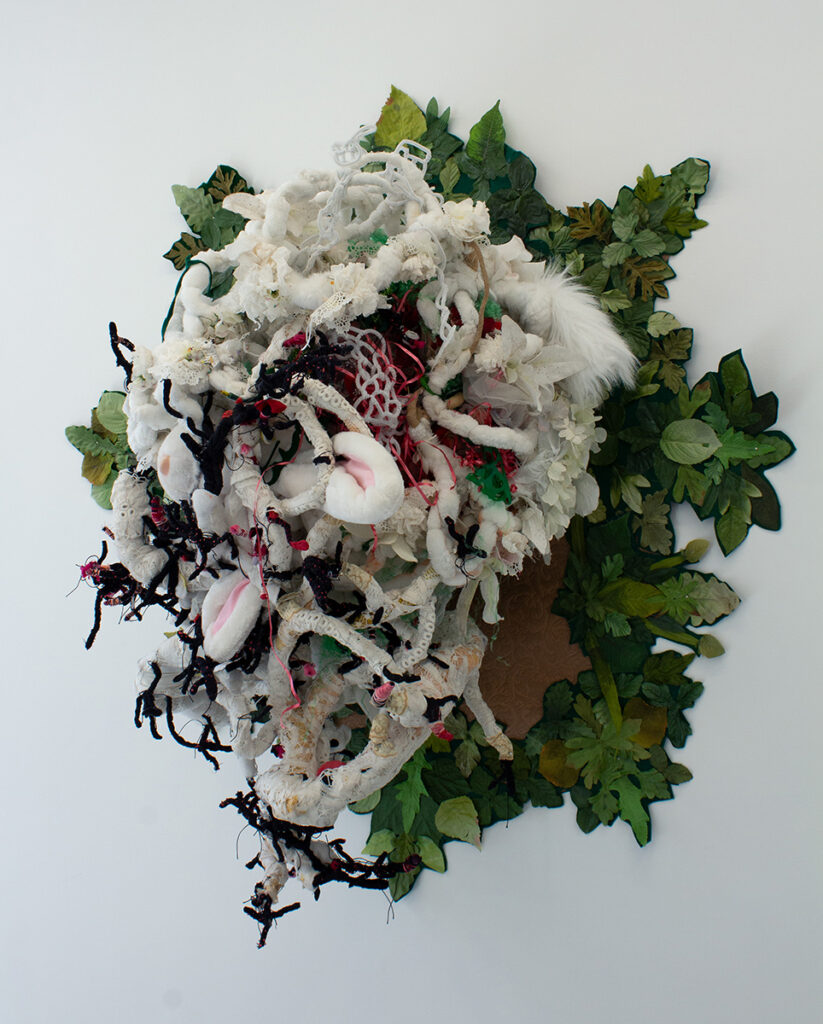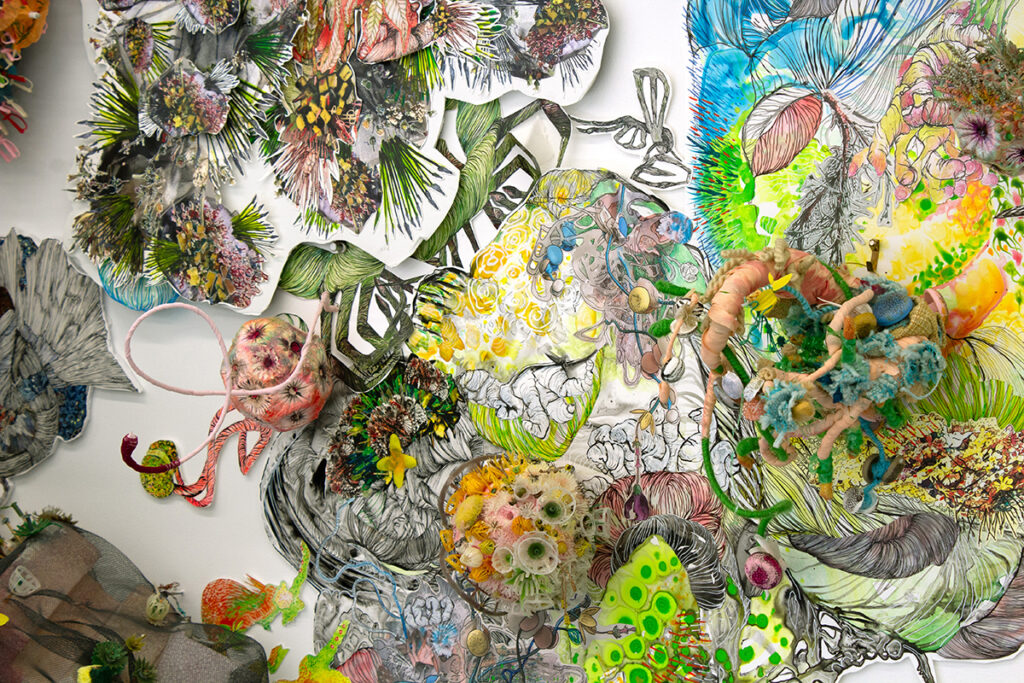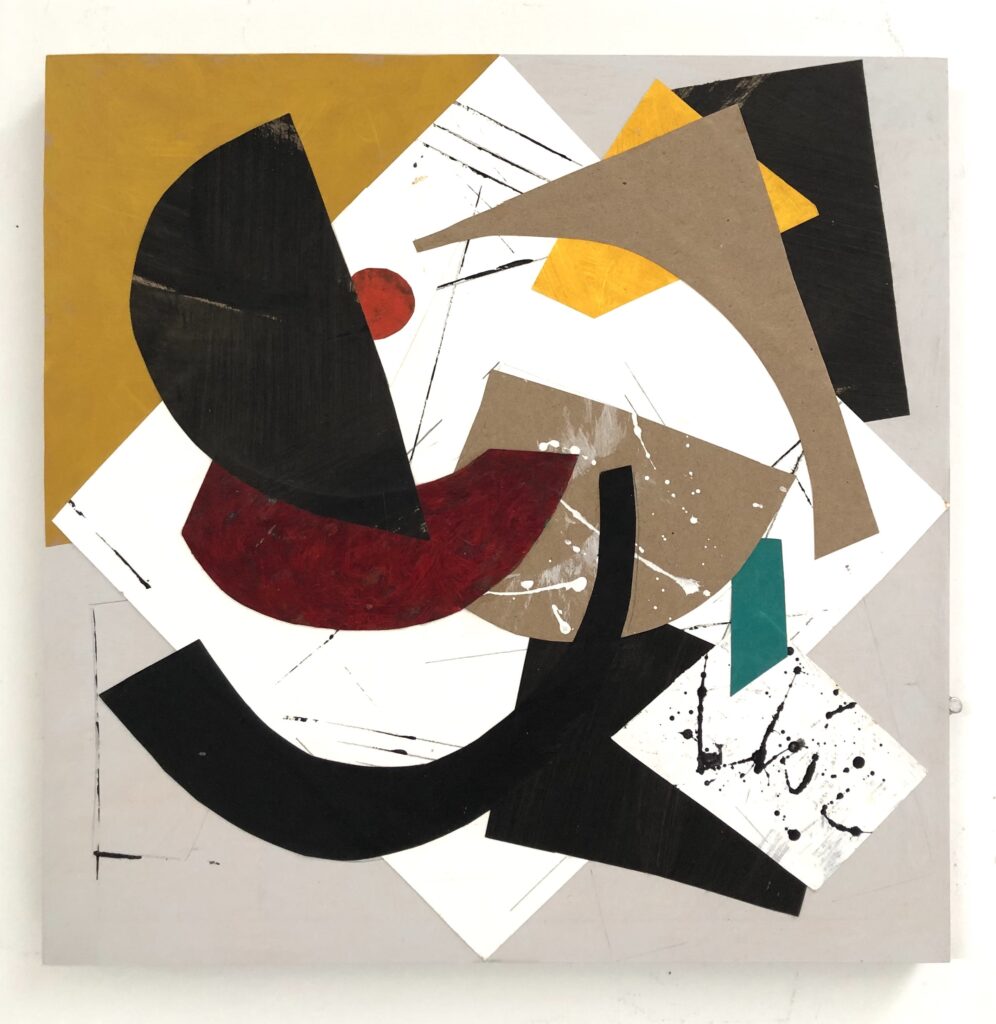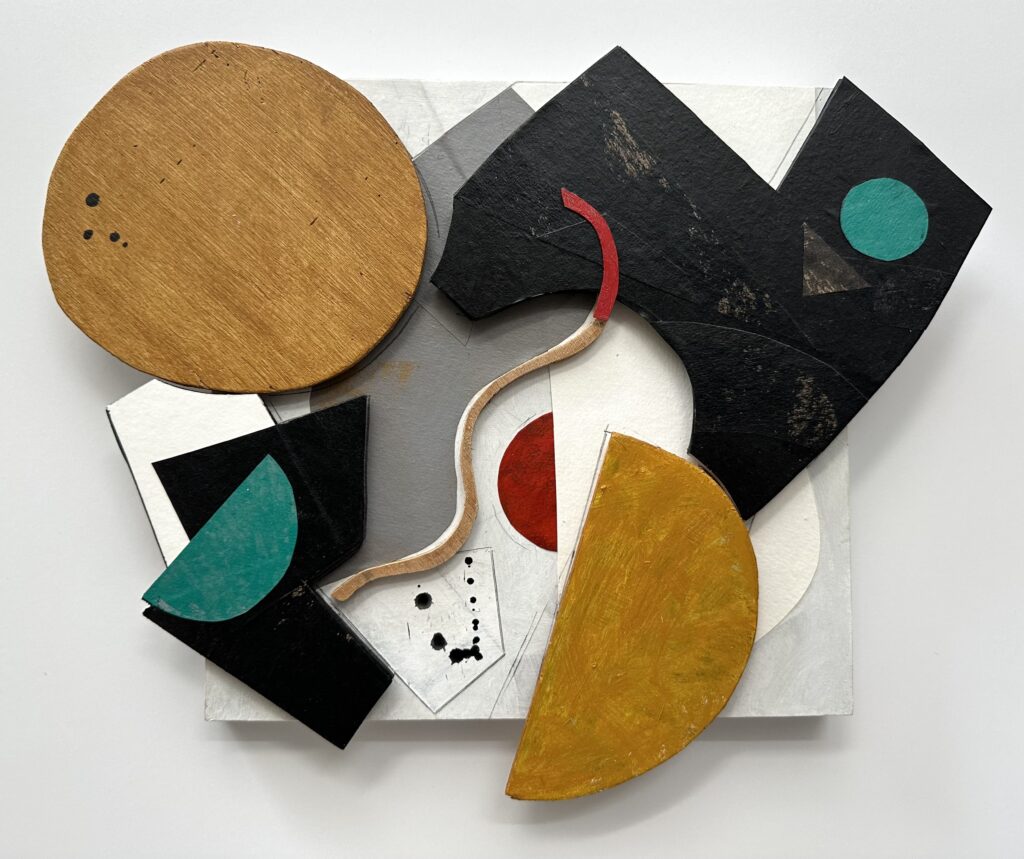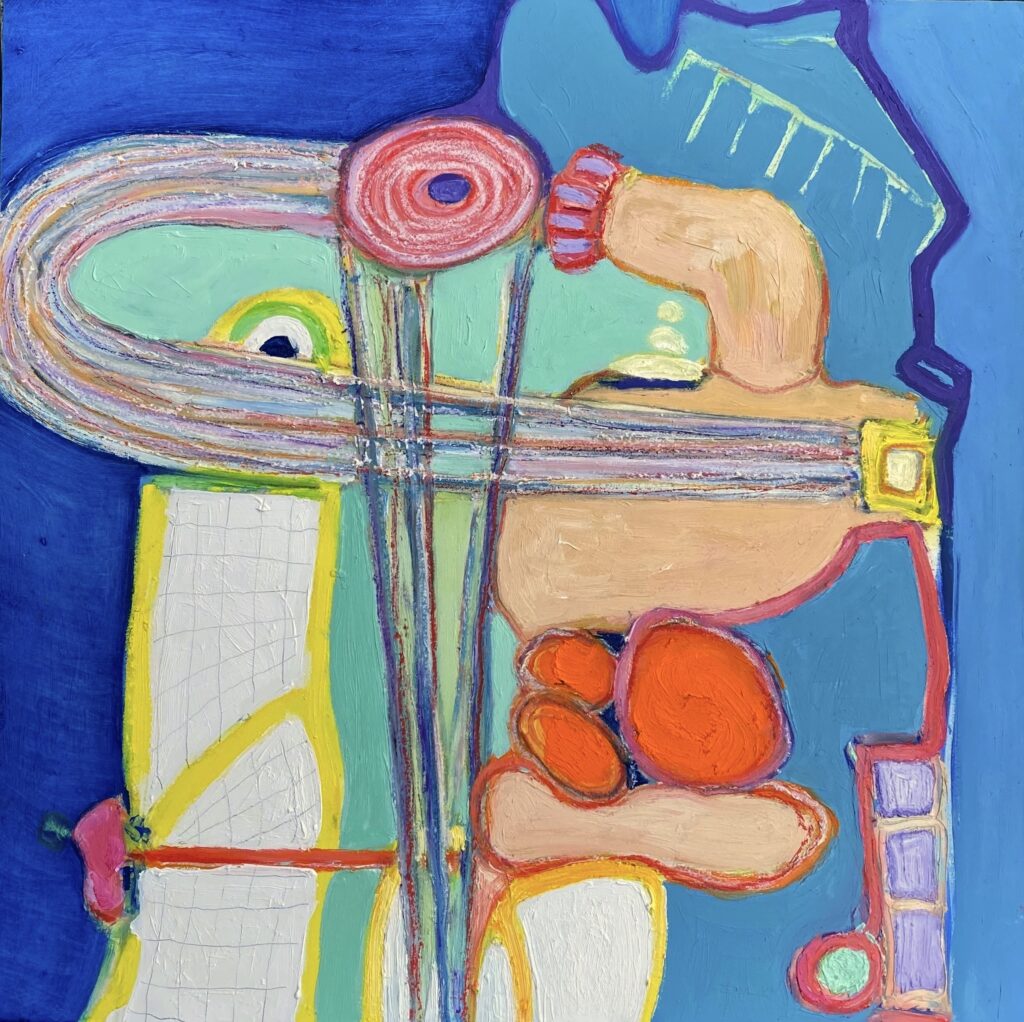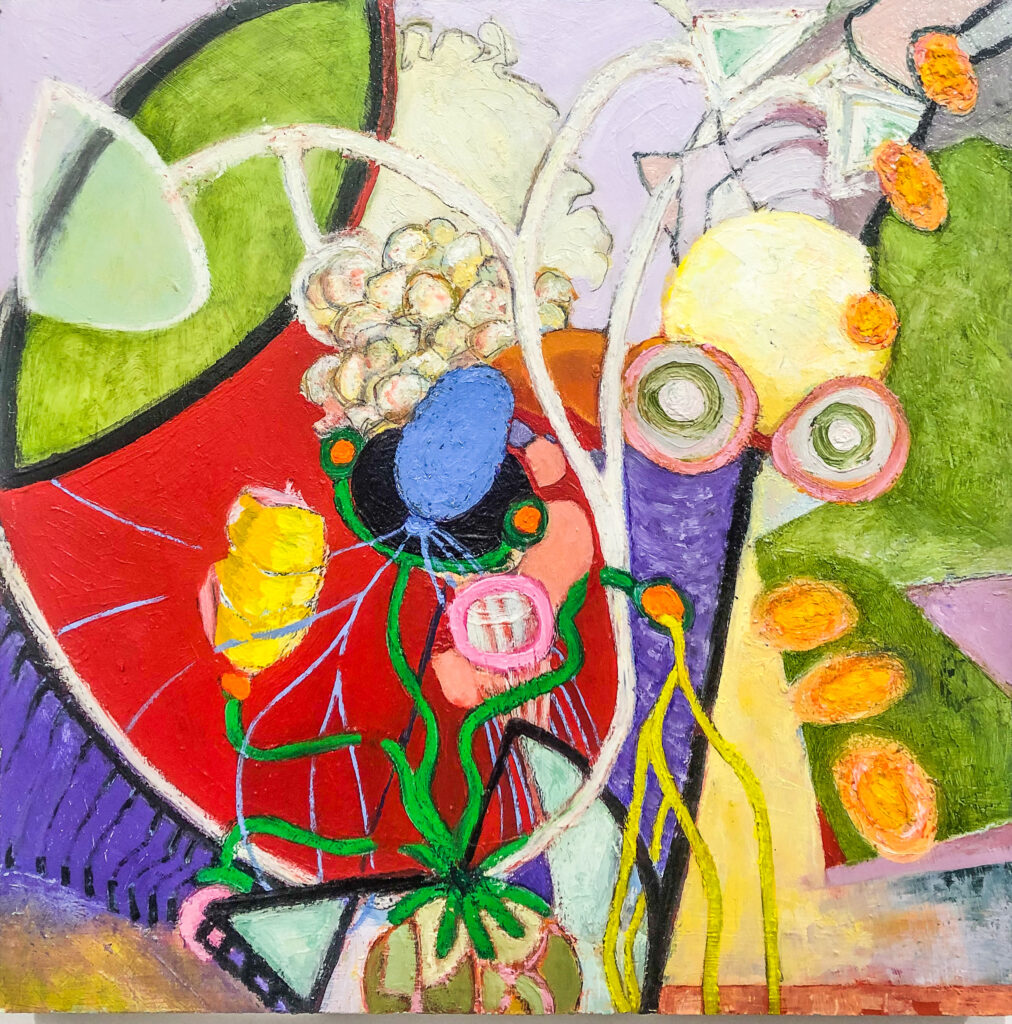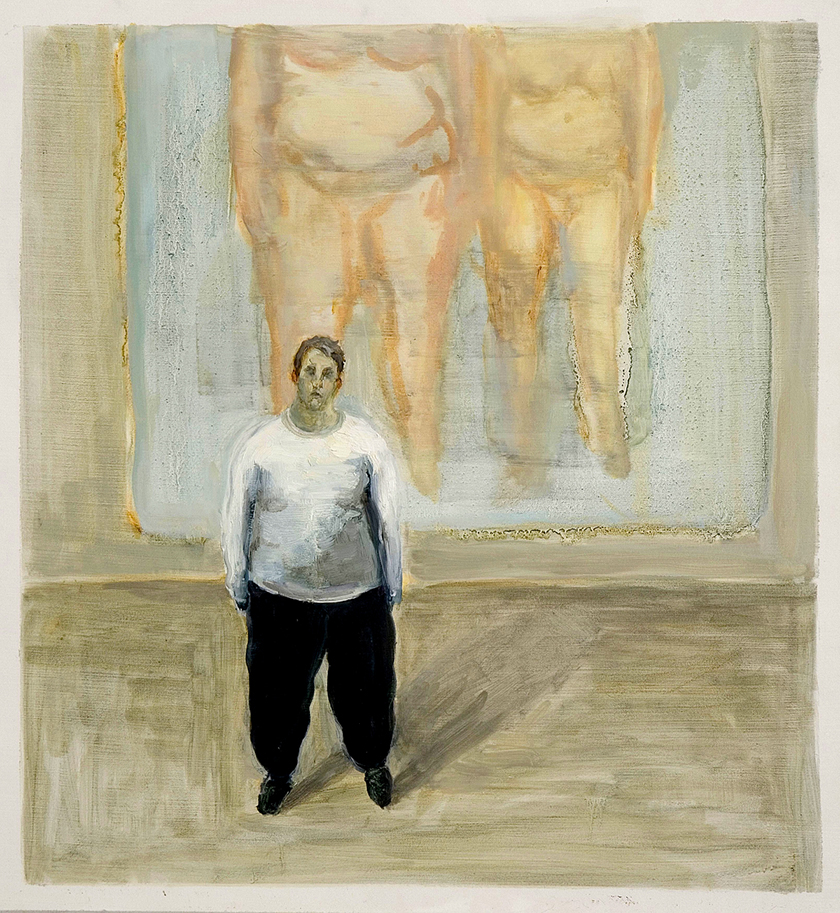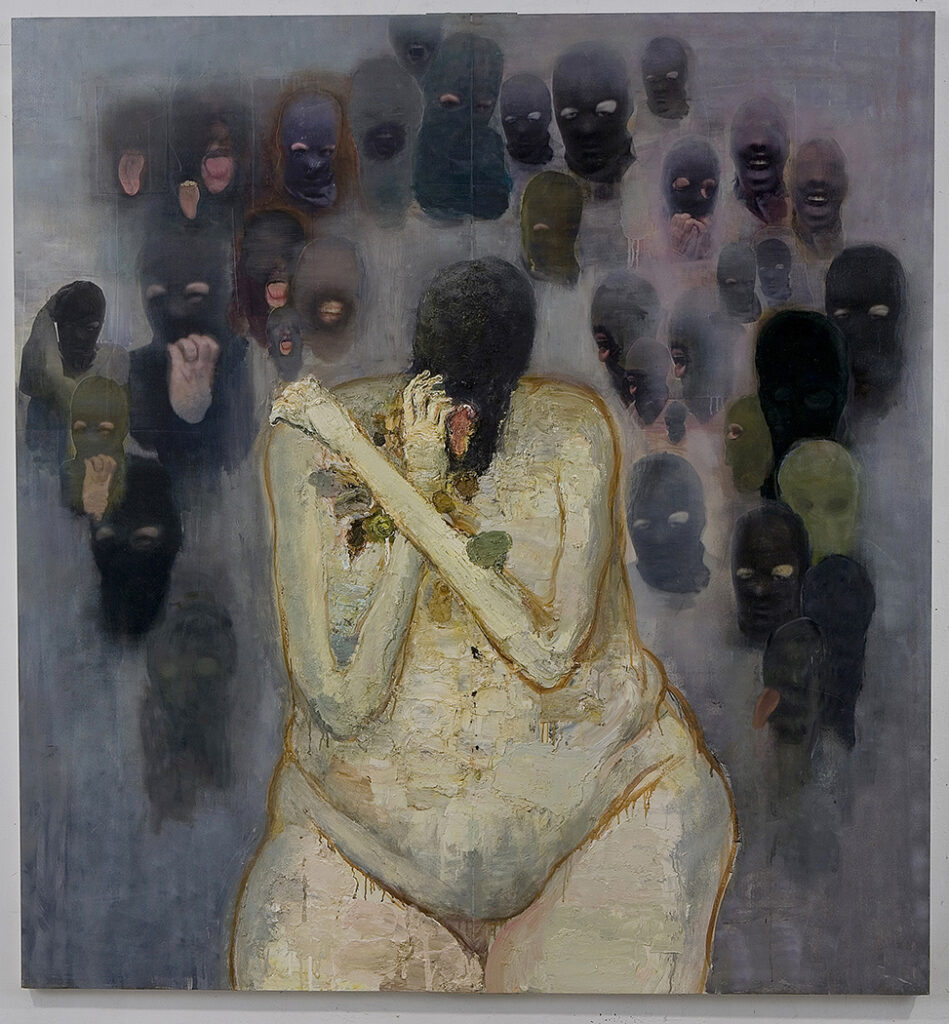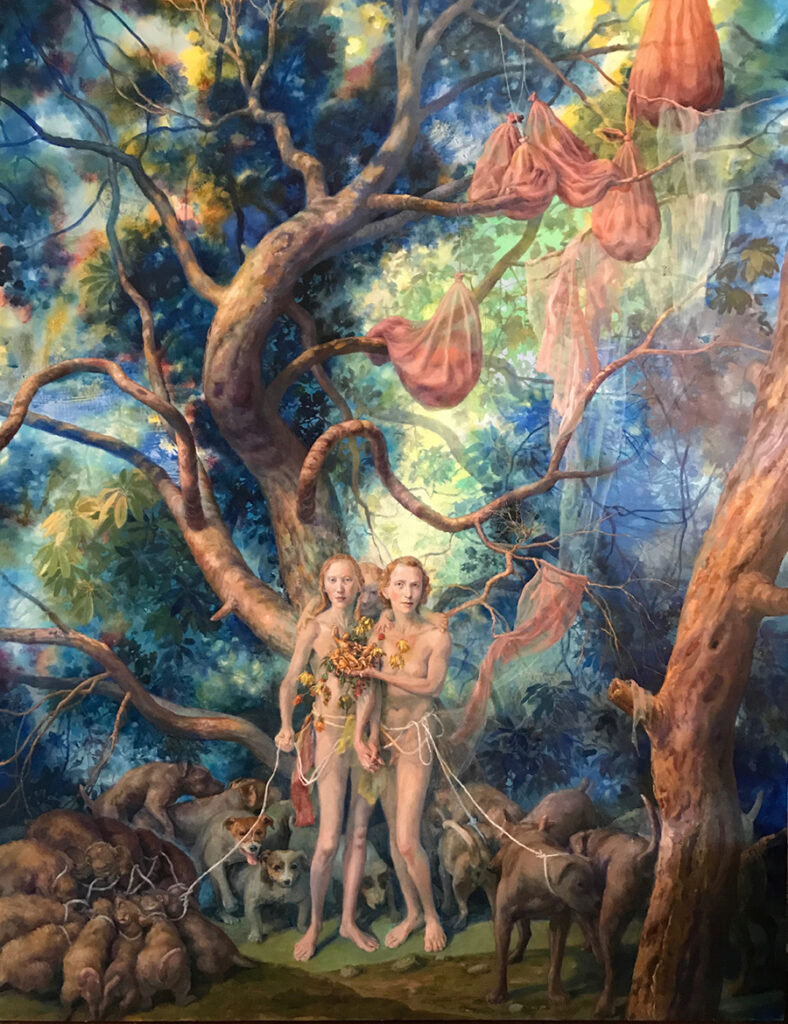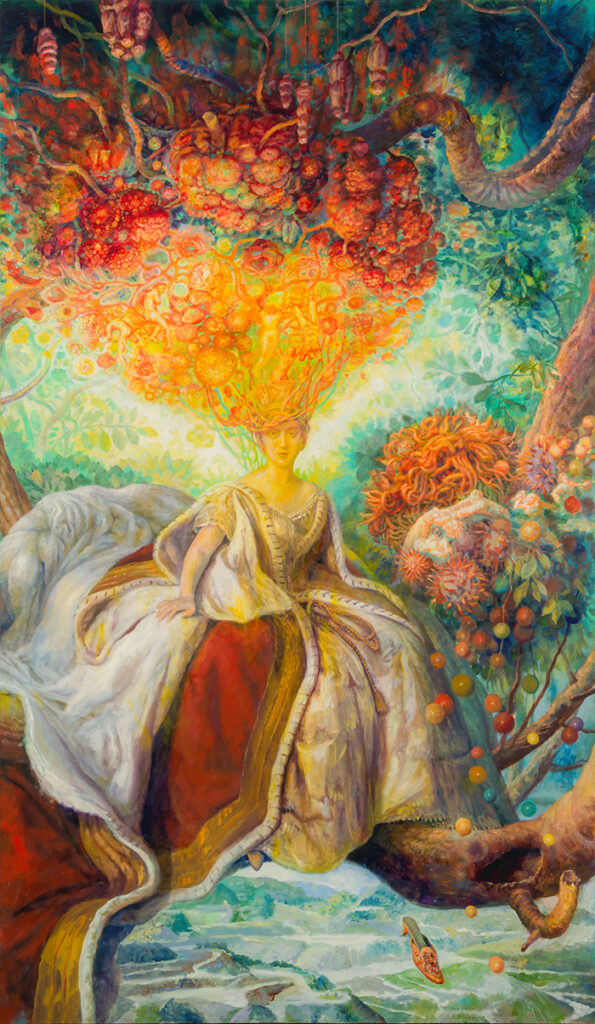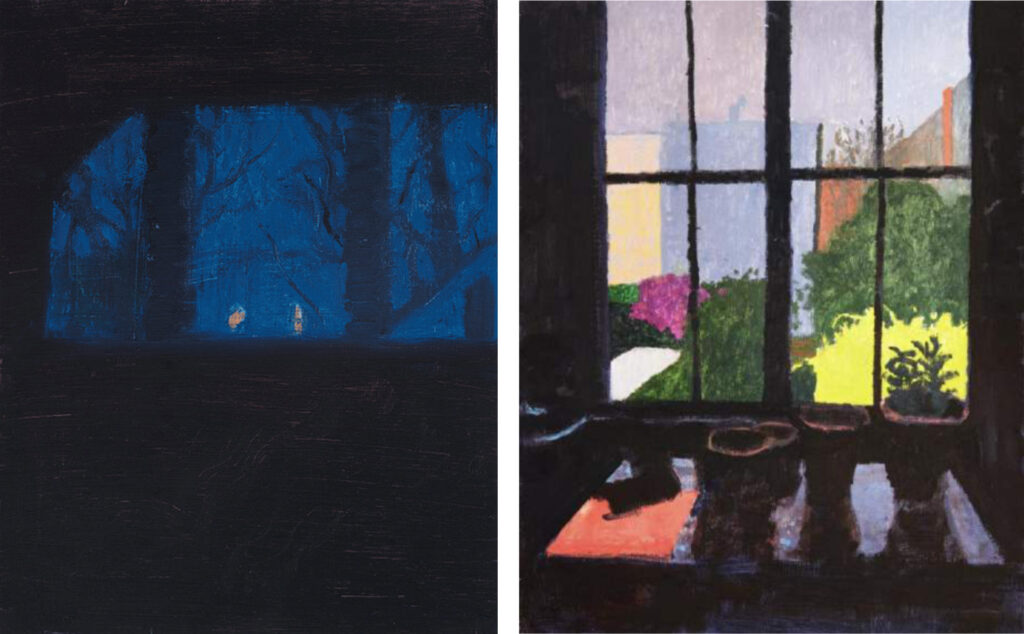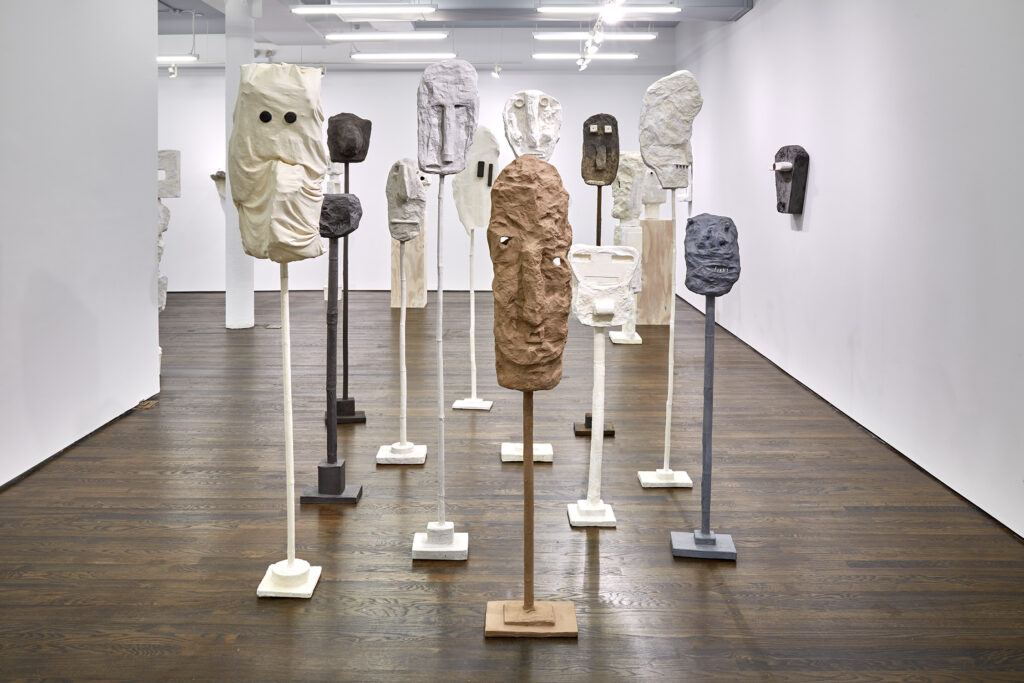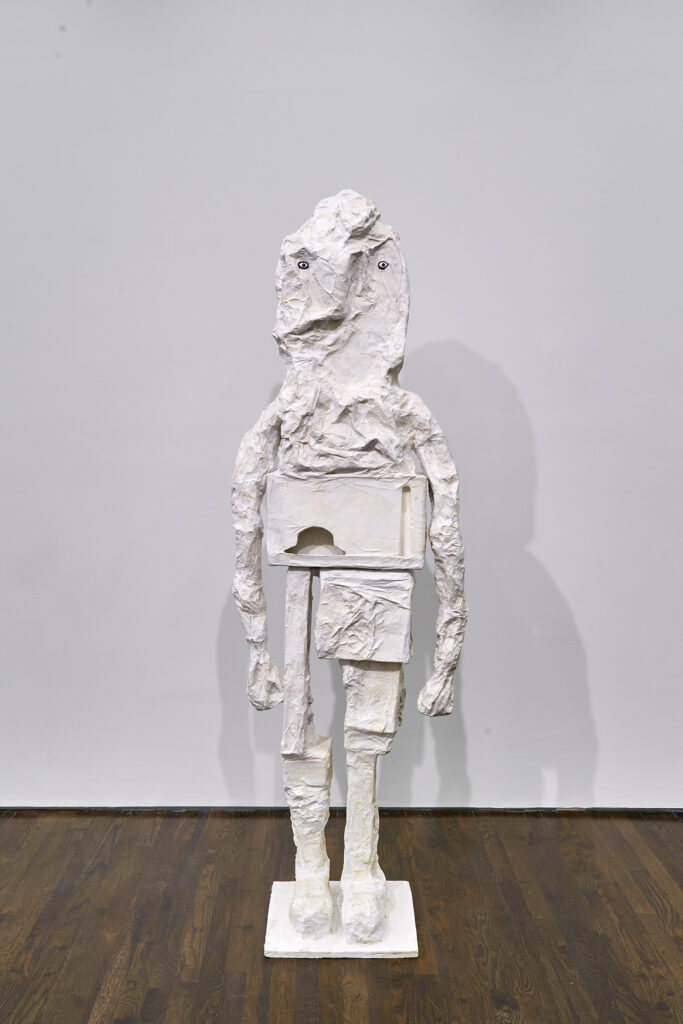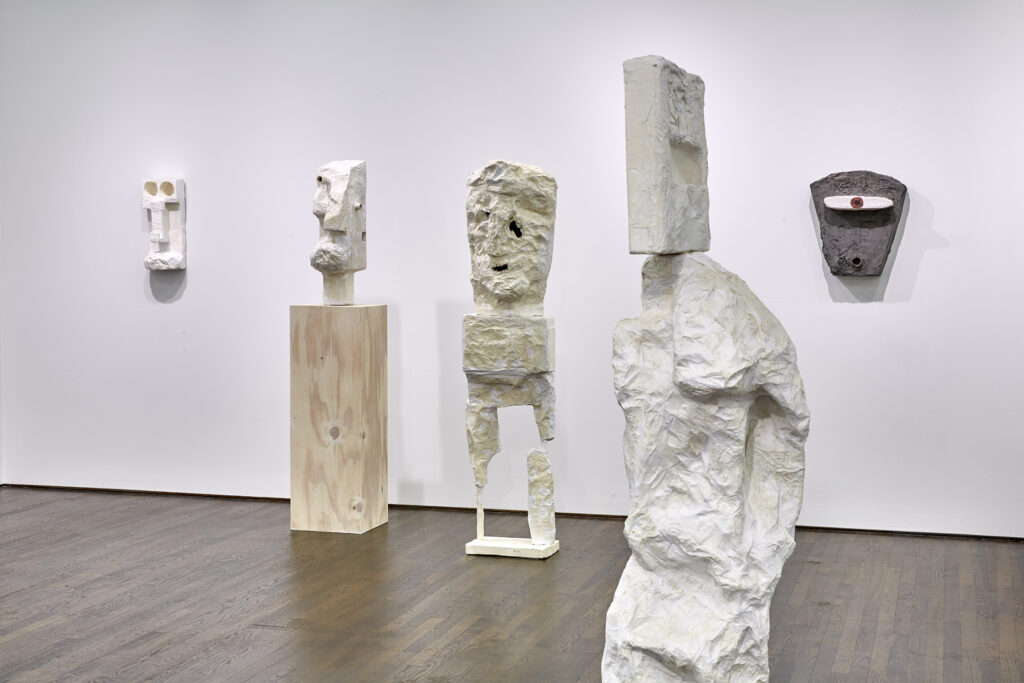by John Mendelsohn
This fall in New York, the work of sculptor Sophia Vari (1940-2023) is the focus of a retrospective exhibition in Chelsea, and an installation of twelve large-scale sculptures on Park Avenue. Together they give us a picture of this artist’s development, and its culmination in work created from 1997-2011.
In the exhibition at the Nohra Haime Gallery, the earliest pieces, from the 1980’s, are flowing, rounded depictions of small figures. These works anticipate the abstract works that followed through the 1980s – intriguing, beautiful sculptures whose curved forms intertwine, suggesting organic growth. The mythological titles of works evoke the birthplace of the artist in Attica, Greece. A prime example is CENTAURE ELEVANT DEIDAMIE [Centaur Kidnapping Deidame], with its golden, sensuous bulges suggesting the struggle of Deidame, (also known as Hippodamia, “tamer of horses”) with one of the centaurs who attacked her bridal party, attempting her abduction and rape.
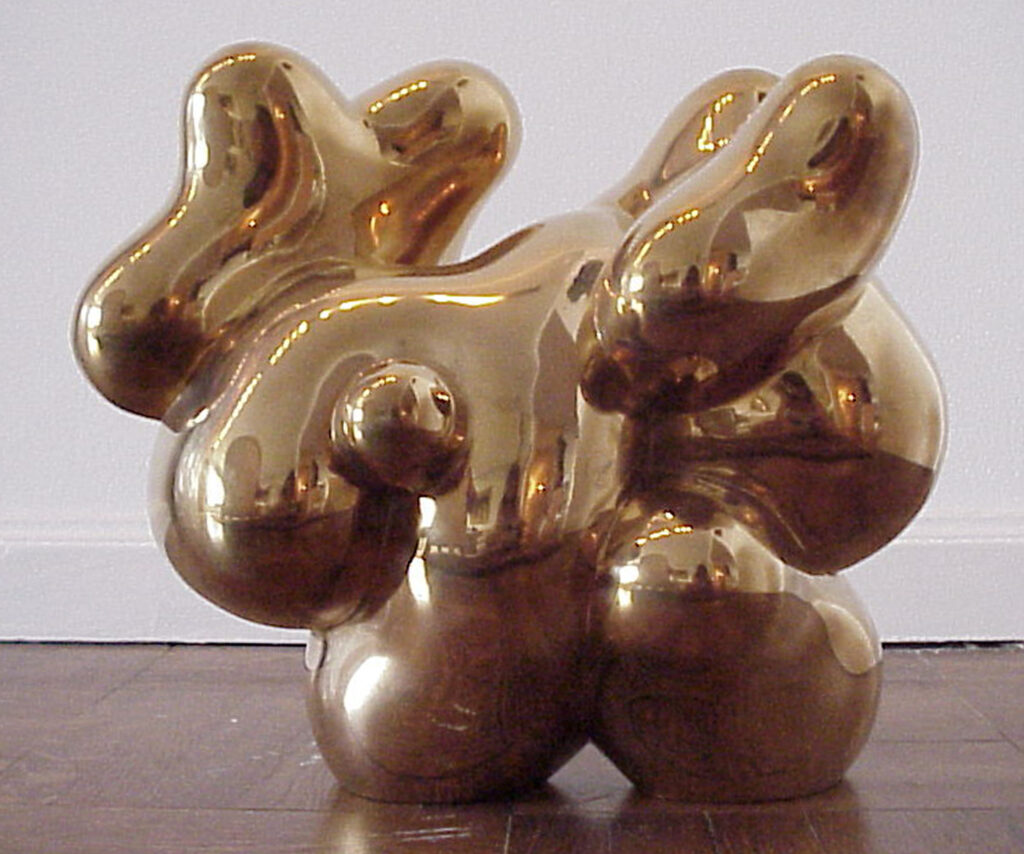
In the 1990’s Vari’s work incorporated a new set of influences. There was an emphasis on intersecting planar structures that seem like a hybrid of the organic and the mechanical. They suggest the artist’s absorbing the examples of both Cubism and the Olmec culture of ancient Mexico, whose art included massive heads sculpted in stone. FORMES DU SILENCE [Forms of Silence] combines soft-edged geometry with curving shapes that suggest plant or animal life.
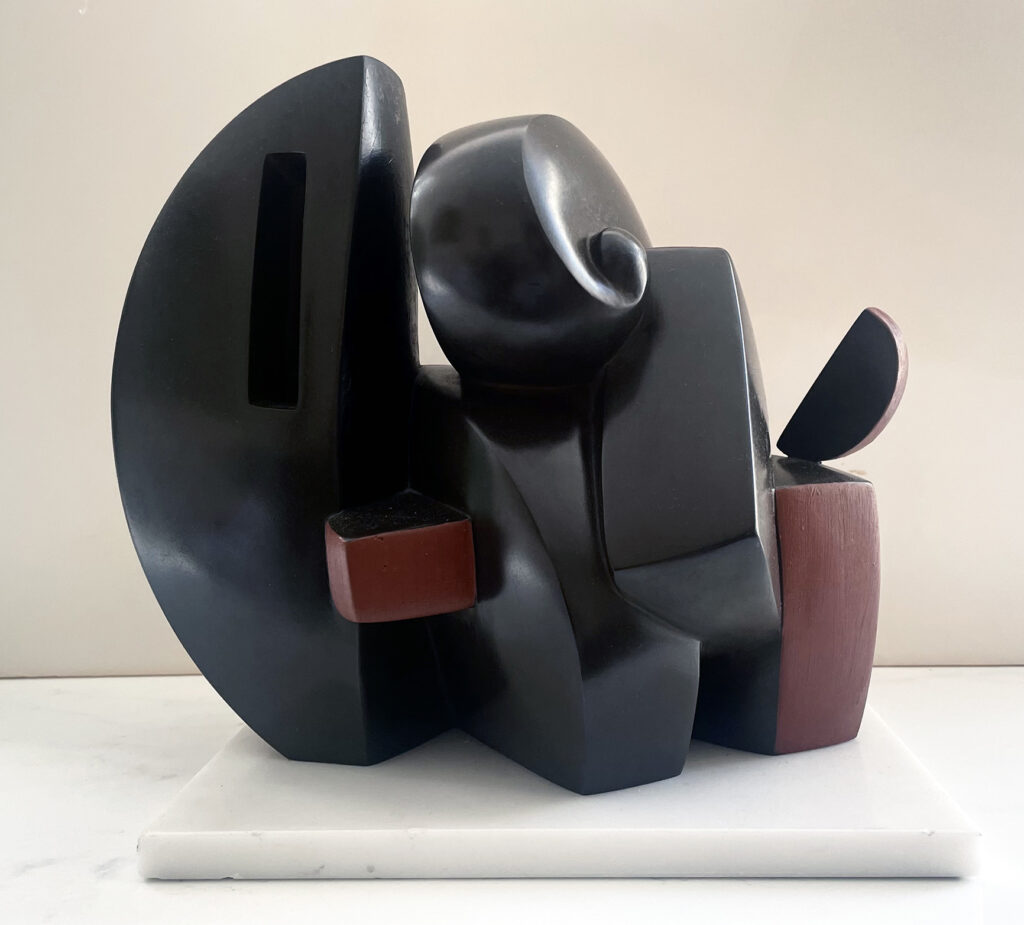
From the earlier compact works, Vari progressed to sculptures that stood vertically, suggesting abstract figural movement, and a winding, knotted energy. Polychromed planes, evident in the previous pieces, become defining characteristics here, lending a kind of painterly verve to these resolutely sculptural works. The presence of color and strong form are reflected in the collages from the 1990s through the 2000s, with their canted, rectilinear elements in paper and cardboard, enhanced by trompe l’oeil shadows in charcoal.
The twelve sculptures installed on the mall on Park Avenue from 53rd to 62nd Streets represent a quantum leap in Vari’s work, both in scale and artistic ambition. Tragically, the artist died just three days before the installation was completed. The work is presented by the Nohra Haime Gallery in collaboration with The Sculpture Committee of The Fund for Park Avenue and the NYC Parks’ Art in the Parks program. This suite of sculptures arrives in New York after having been shown in cities across the world including Paris, Rome, London, Beijing, Athens, Cartagena, and Geneva.
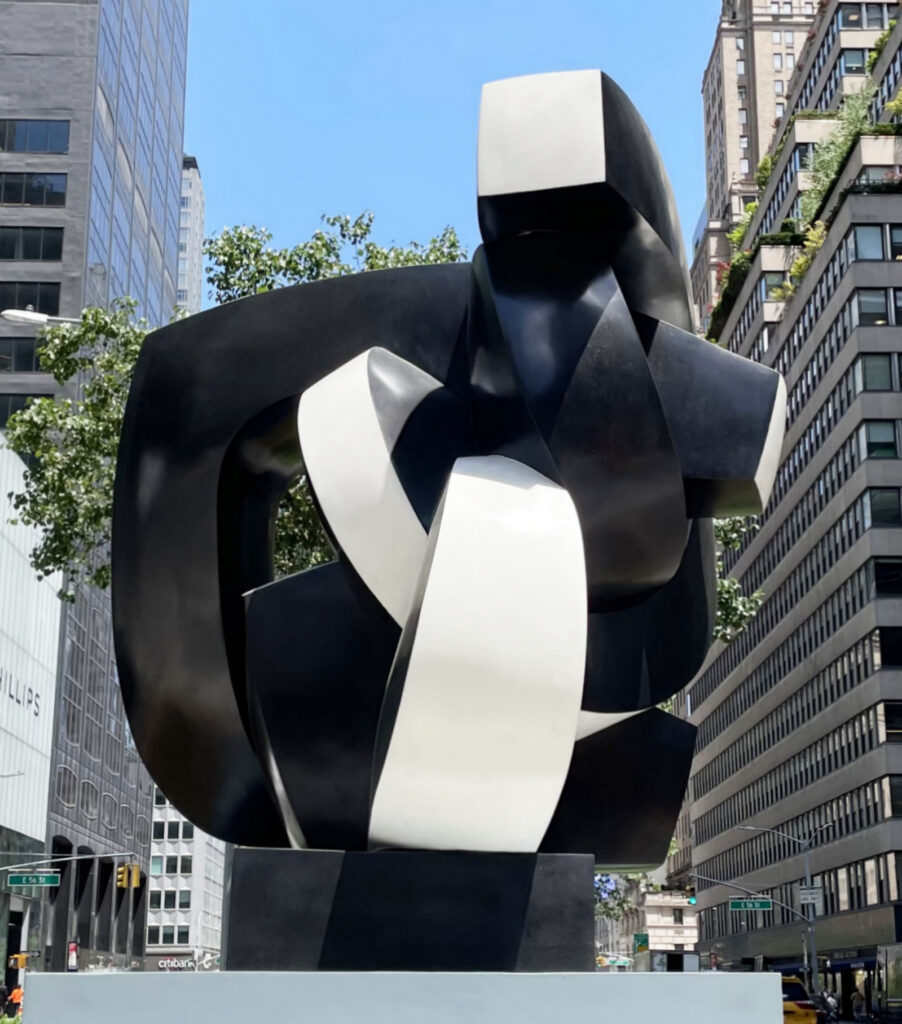
These are muscular, fully embodied works, reductive and staunchly modernist in their visual language of twisting, arced cubic elements. There are echoes of the rigors of Cubism and Constructivism, but a playfulness is at work here too. The sculptures are full of movement and compacted energy, and often suggest human conundrums or even individual personages. The bronze has a black patina, and selected planes are painted, usually in white, but at times red or yellow. The effect is strongly graphic, accenting the choreography of striding, reaching, and locking together.
The sculptures range in emotion from jaunty, to ominous, to satirical, all expressed abstractly. In the piece Point immobile [Still Point], the moment of equilibrium is reached, but paradoxically not by the reconciling of opposites. Rather, like for warring lovers, the quietude begins when the forms are so tightly bound that no further struggle is possible.
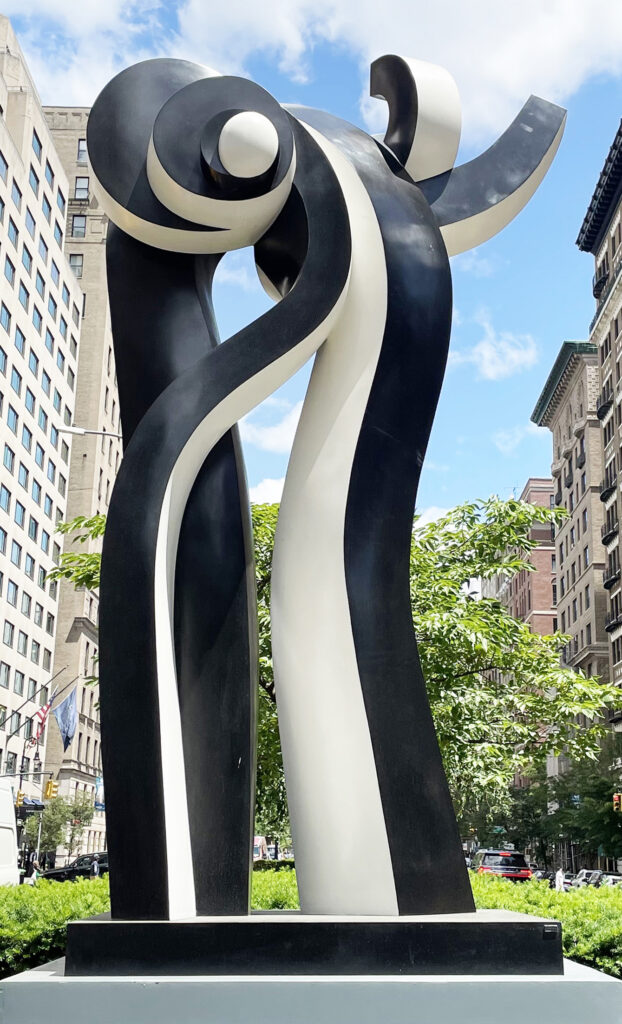
The sculpture Les serpentes de la guerre [The Serpents of War] features sinuous, vertical tentacles whose melding and separating are emphasized by long, white planes that contrast with the black, snaking curves. The planes end in two circular “heads” which hold a single white sphere, a form which Vari repeats, seemingly connoting a node of consciousness embedded in the physicality of form.
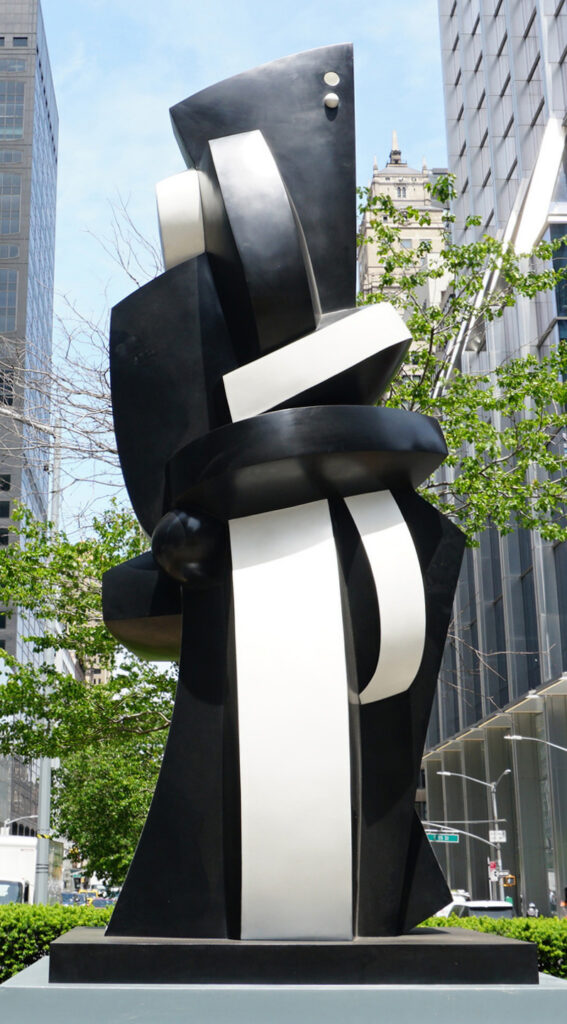
L’Homme (The Man), which like many of the sculptures is over ten feet tall, conveys the presence of a figure all wrapped up in himself, a monument to his self-possessed identity. His blindness to his pretention to power is signaled by the two tiny eyes in his massive cockscomb head, one a protruding orb, the other an unseeing concave space.
Sophia Vari: A Retrospective at the Nohra Haime Gallery, August 7 to September 30, 2023 and Sophia Vari On Park Avenue: A Tribute, Twelve Monumental Sculptures on Park Avenue, 62nd to 53rd St., New York, May 20 to November 5, 2023

